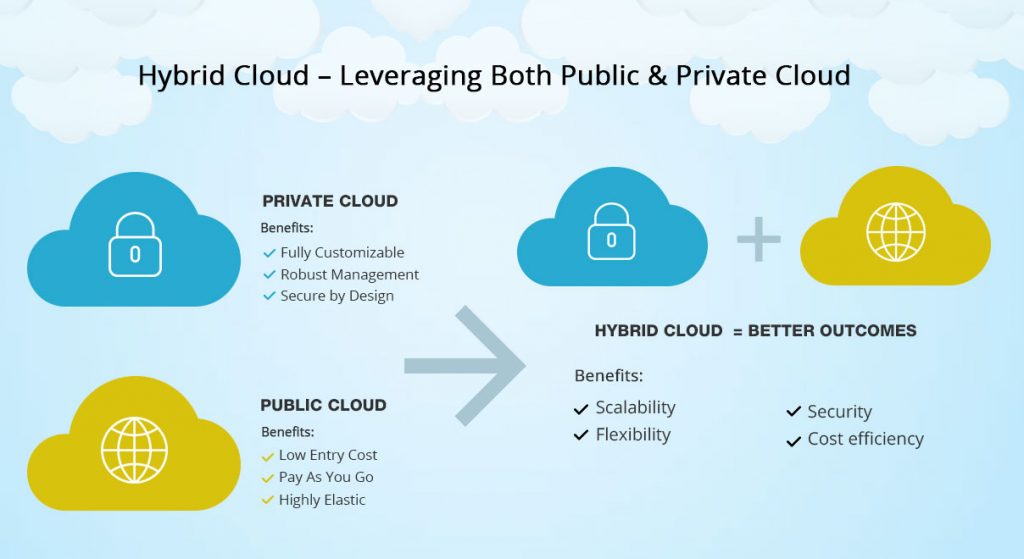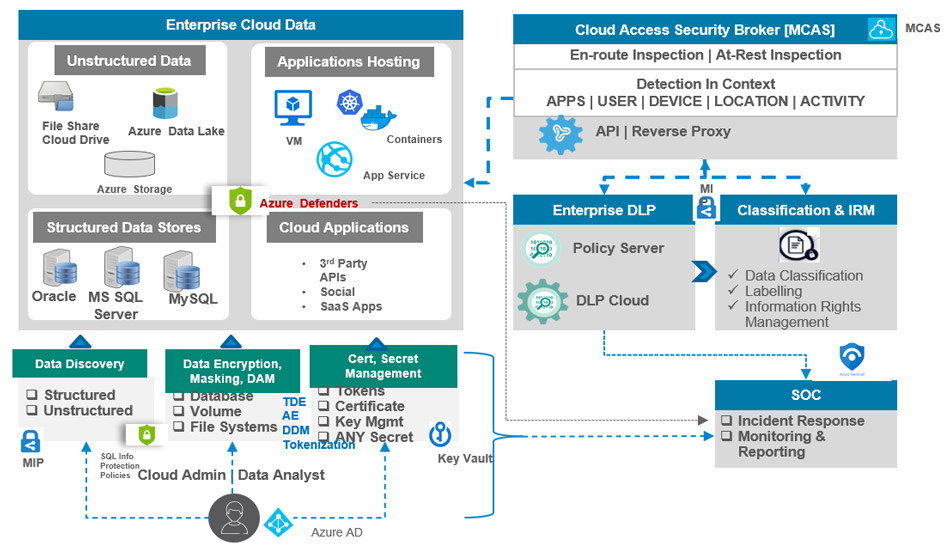Comments
- No comments found

As enterprise businesses continue to embrace cloud technology, hybrid cloud solutions are becoming an increasingly popular choice.
Hybrid cloud environments offer a blend of public and private cloud resources, providing businesses with greater flexibility and control over their data and applications. Adopting a hybrid cloud strategy can be complex and risky, and it requires careful planning and execution. In this article, we will explore the key considerations and best practices for enterprise businesses to successfully adopt and manage a hybrid cloud environment.

Source: Vertis
Hybrid cloud adoption offers numerous benefits, such as greater agility, flexibility, scalability, and cost savings. However, it also introduces several risks and challenges, such as data security, compliance, integration complexity, and management overhead. To successfully adopt and manage a hybrid cloud environment, businesses need to carefully evaluate the pros and cons and develop a clear understanding of their specific needs and goals.
A successful hybrid cloud adoption strategy requires a holistic approach that aligns with business objectives, IT capabilities, and budget constraints. It should involve assessing current IT infrastructure and applications, identifying the workload requirements and characteristics, and defining the cloud deployment models and service providers that best meet the needs. A hybrid cloud strategy should also include a roadmap for migration, integration, and optimization, as well as a plan for ongoing management and monitoring.

When choosing cloud providers and solutions for hybrid cloud adoption, businesses should consider factors such as security, compliance, reliability, performance, scalability, and cost. They should also evaluate the compatibility and interoperability with existing on-premises systems and applications, as well as the ease of migration and integration. Businesses should also conduct thorough due diligence and select providers with a proven track record of success and a commitment to customer support.
One of the biggest challenges in hybrid cloud adoption is integrating on-premises and cloud environments seamlessly. To achieve this, businesses need to implement robust and scalable integration solutions that can handle data synchronization, application connectivity, and identity and access management. They should also leverage hybrid cloud management tools and APIs that provide visibility, control, and automation across the entire hybrid cloud environment.

Source: Wipro
Hybrid cloud adoption introduces new security and compliance risks and challenges, such as data privacy, regulatory compliance, and cloud provider security. To mitigate these risks, businesses need to implement a comprehensive security and compliance strategy that covers all layers of the hybrid cloud environment, from the network to the application. They should also ensure that the cloud providers and solutions comply with relevant regulations and standards and provide transparent and auditable security controls.
Hybrid cloud adoption can provide significant cost savings and ROI opportunities by optimizing resource utilization, reducing infrastructure and operational costs, and enabling agile and efficient business processes. To achieve these benefits, businesses need to adopt a data-driven and cost-optimized approach that leverages cloud cost management tools, analytics, and automation.
Hybrid cloud adoption can help businesses achieve the benefits of cloud technology while addressing the unique needs and challenges of their organization. However, it is important to have a clear hybrid cloud adoption strategy in place to ensure a successful and secure transition to this technology.

Before implementing a hybrid cloud strategy, it is important for businesses to consider the following key factors:
One of the key advantages of hybrid cloud technology is the ability to place workloads in the most appropriate environment based on their specific requirements. For example, sensitive workloads may be better suited to a private cloud environment, while more scalable workloads can be placed in a public cloud environment.
Integrating different cloud environments can be a complex process, so it is important to consider how different systems will work together and how data will be transferred between them. This may involve implementing new integration tools or platforms.
Hybrid cloud adoption can introduce new security risks, such as data breaches or unauthorized access. It is important for businesses to implement strong security measures and ensure that all cloud environments are fully secured.
Hybrid cloud adoption can be costly, as it may involve investing in new hardware, software, and services. It is important to carefully consider the costs and benefits of hybrid cloud adoption before making a decision.

There are several strategies that businesses can use to successfully adopt hybrid cloud technology:
This strategy involves moving existing workloads to a public cloud environment without making any significant changes to the application or infrastructure. This can be a quick and easy way to migrate workloads to the cloud, but it may not take advantage of all the benefits of hybrid cloud technology.
This strategy involves developing new applications specifically for a hybrid cloud environment. This allows businesses to take full advantage of the benefits of cloud technology while addressing the unique needs of their organization.
This strategy involves building applications using cloud-native technologies such as containers and microservices. This allows for greater flexibility and scalability, but may require significant changes to existing infrastructure and processes.

Several large enterprises have successfully implemented hybrid cloud adoption strategies, including:
Dropbox uses a hybrid cloud strategy to store user data. The company uses a private cloud environment for sensitive user data, while less sensitive data is stored in a public cloud environment.
Volkswagen uses a hybrid cloud strategy to enable its digital transformation initiatives. The company uses a combination of private and public cloud environments to run its IT infrastructure and support its digital applications.

Hybrid cloud adoption can provide significant benefits for businesses, but it is important to have a clear strategy in place to ensure a successful and secure transition. By carefully considering key factors such as workload placement, integration, security, and cost, businesses can successfully adopt hybrid cloud technology and take full advantage of the benefits it offers.
Leave your comments
Post comment as a guest